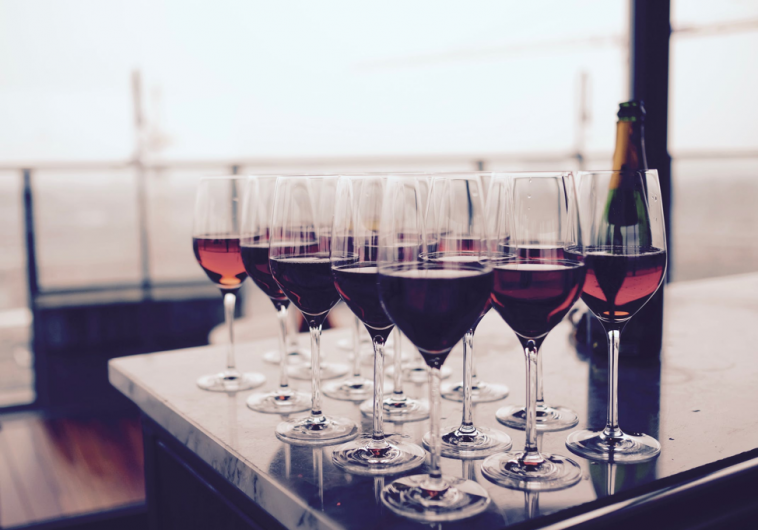Whether you prefer to enjoy a glass of wine to catch up with friends, dinner, or simply want to soak away a draining day in the bathtub, wine is undoubtedly an excellent beverage for multiple occasions. And Cabernet Sauvignon wine is a well-known variety because of its ability to pair excellently with food and its full-bodied flavor.
What’s more, the grapes used to make a Cabernet Sauvignon wine can be grown and nourished across the world, including regions like Australia, New Zealand, Chile, California, and France.
For you to find the best Cabernet Sauvignon for your cellar, there are several things you need to consider. To help you out, we’ll walk you through some of the key considerations when choosing a Cabernet Sauvignon wine.
Cabernet Sauvignon Regions
As we’ve mentioned, Cabernet Sauvignon wines are made all over the world, and every region comes up with something unique and distinct to the flavor profile. South American Cab Sauv’s are popular for having green peppercorn notes, while Californian Cab Sauv’s usually had hints of tobacco.
If you are looking for a classic, then choose one that’s made from France. The Cabernet Sauvignons in France tend to yield a more oaky and spicy tasting wine.
Quality Vs. Price
Since the prices of the Cabernet Sauvignons in Napa Valley differ greatly, it should be considered thoroughly. Remember that one of the first actions or measures in choosing the right wine for your cellar or wine rack is to determine your price range.
Although it’s essential to consider that quality is usually depicted in price, there are many great options in a vast array of price ranges, like Sokolin Caymus wine (priced between $100 and $200). Moreover, another factor that’ll influence the price of a wine is its vintage.
Just like most red wines, particular varieties of Cabernet Sauvignon becomes much better with age. Also, there are specific years that are deemed as some of the best. What’s more, Cab Sauv’s from its prime years will undoubtedly be more costly compared to bottles made in years that were not as good.
Nevertheless, there are many instances when an aged bottle isn’t always better than the young version. Even though vintage is crucial, it’s not the only deciding factor in selecting a great Cabernet Sauvignon.
Tasting Notes
Cabernet Sauvignon wines taste primarily of dark fruits such as blueberries, blackberries, plums, cherries, and currants. But some Cab Sauv have wood or oak notes, as well. And others have vanilla, tobacco, pepper, and spice flavors.
To find the right Cab Sauv for you, consider tasting different wines first and determine its tasting notes, and what you like about them. Assess the five distinct aromas in the wine and refine your opinion.
You can do this by looking at the color of the wine to start. The color can tell you lots of things, such as the climate and variety of wine. Next, swirl your glass and perceive how it creates “tears” or “legs” on the glass’ sides. Are they fast, slow-moving, thick tears?
It can tell you whether the wine is higher in sweetness, alcohol, or both. Additionally, before you taste it, smell it first. Look for herb, flower, fruit, baking spices, inorganic, or earthy organic smells. Lastly, taste the wine. Concentrate on the texture of the wine and how it evolves from beginning to end.
Alcohol By Volume
In case you didn’t know, Cabernet Sauvignon wines typically have a bit higher alcohol by volume (ABV), averaging between 13.5% and 15%. Other wines offer an average ABV of 11% to 13%.
Temperature
Cabernet Sauvignon gains its structure from the tannins which exist in the wine. These tannins allow the wine to age well and in some cases, Cabernet Sauvignon can be aged for decades whilst the tannins soften and the wine flavors develop fully. Storing Cab Sauv at the proper temperature is essential. When storing wines over several years, light, temperature, humidity, and vibration play a role, so it is best to store age-worthy Cabernet Sauvignons in a wine cooler at 53 degrees Fahrenheit or 11 degrees Celsius.
Properties
Although you can select from many options or choices, all Cabernet Sauvignons share a couple of common qualities. Cab Sauv wines typically have a bitter, dry flavor because of the many tannins they have.
Keep in mind that tannins are astringent, bitter compounds discovered in most natural substances like grapes, leaves, bark, and wood. Even so, there are sweet versions of Cabernet Sauvignons, too.
Additionally, Cabernet Sauvignons have a pleasant tartness due to their medium acidity. And Cabernet Sauvignon wines have a full-bodied flavor, meaning they are best consumed deliberately and slowly.
Takeaway
Cabernet Sauvignon wines are best served between 63 and 65°F and must be sipped in large glasses with broad openings. Moreover, this type of wine is particularly paired well with meat dishes, like lamb and beef. Also, it pairs excellently with cheese, specifically hard varieties such as aged cheddar and gouda.
It is crucial to consider the price, properties, and the region where the grapes were grown with regards to selecting the best Cabernet Sauvignon. Plus, the food you pair with it. If you are not sure which Cabernet Sauvignon wine is right for you, then think about tasting different Cab Sauv to compare flavors.
Read more:



